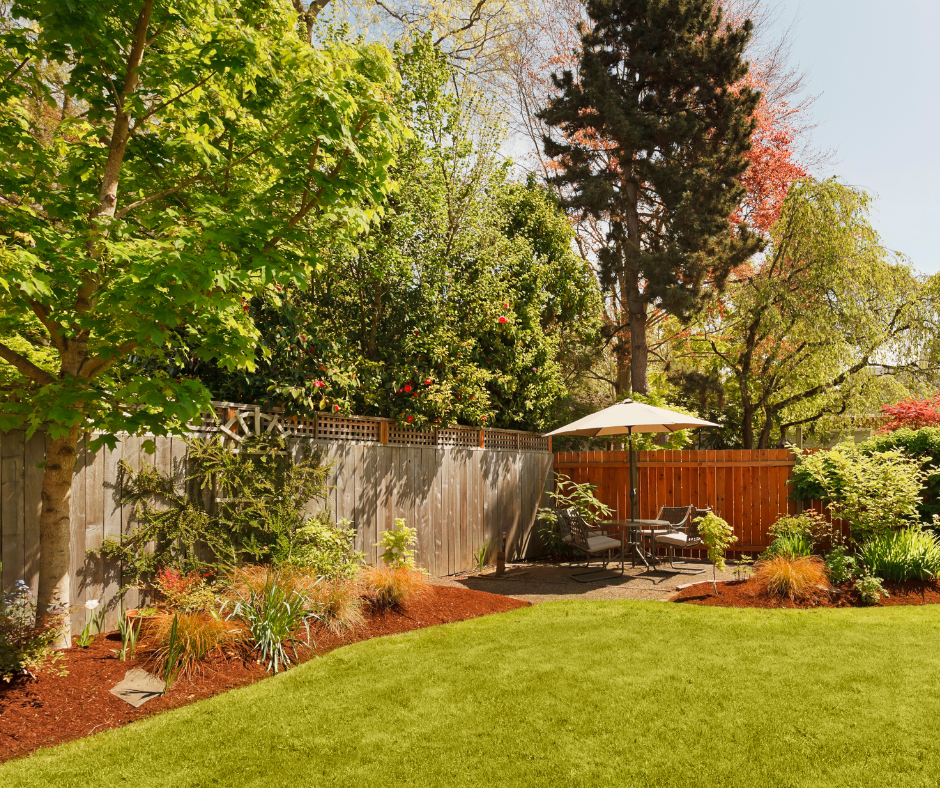So, why is fall the best time to plant trees and shrubs?
Not as much watering is needed
Young plants need plenty of water. It is best to give good, long soakings rather than frequent, light watering. A typical rule of thumb is to provide at least 1 inch of irrigation per week. Summertime planting requires close attention to moisture levels and much of it can evaporate with the heat of the day. Autumn's cooler temperatures and shorter days may allow for less watering.
Cooler temperatures
The high heat of summer can be harmful to newly planted trees and bushes, increasing the amount of care and attention required. In the fall, lower temperatures are less stressful on plants that are already working hard to adapt to the rigors of being transplanted.
Extended planting season
While we generally stops planting perennials in mid-October, trees and shrubs can be planted until the ground freezes. Depending on the weather, this means we can sometimes plant trees up until Christmas here in southwestern Michigan. The trees go dormant, so cold temperatures do not adversely affect them and they have several months for root development in anticipation of spring.
Things to remember when planting in the fall
Trees and Shrubs
Always check out the tag information to choose the perfect location for your new tree or shrub, making sure it has enough room to grow to its mature size–you certainly don’t want to have to move it later. Dig your hole two to three times as wide and just as deep as the root ball, loosening the soil in the hole to allow for roots to spread. If the root ball is in burlap, you can remove it or leave it as is; the burlap will decompose over time, just make sure to cut it back from the top of the root ball. If your plant is in a pot and roots are tightly tangled or root-bound, you can cut them to loosen. It will not harm the plant and cutting will encourage new root growth. Make sure the top of the root ball is even with the soil line and fill in the hole and cover with soil. Tamp the soil lightly, then water to remove air pockets. Cover with a couple of inches of mulch to protect roots from freezing. Keep newly planted trees or shrubs watered well until the ground freezes. This will give roots a strong start on growth before going into dormancy. Skip fertilization and pruning in the fall, as both encourage new growth above ground and you want the tree or shrub to focus solely on root establishment going into winter.
Perennials
Fall is a great time to take stock of your perennials. Hostas growing out of control? Divide them and re-plant elsewhere or share your extras with friends. Love the look of peonies or irises? Plant them in the fall to give them the best chance of success, or if you need to relocate them, there’s no time like the present. The basic rule of thumb? If it blooms in spring or summer, fall is the time to divide or transplant. Looking to add a new variety or two to your garden? It’s perfectly okay to plant perennials as the weather cools. Once you get your chosen perennials home, plant them just as you would in the spring. Dig up the soil to aerate and remove any weeds. You want to dig the hole twice as large as the pot the plant is in. Remove the plant from the pot, loosening roots and place in the hole, covering with soil. Apply a few inches of mulch. It may seem that with the cooler temperatures that watering isn’t as important, but your plants need to be watered until the ground freezes to keep their roots healthy and strong. Make sure plants are getting at least an inch of water a week. The soil maintains warmth in the fall, and because plants aren’t utilizing their energy to produce blooms, a strong root system will have time to develop before the ground freezes, giving your plants a healthy head start. By the time the heat of summer hits next year, they’ll be ready!



